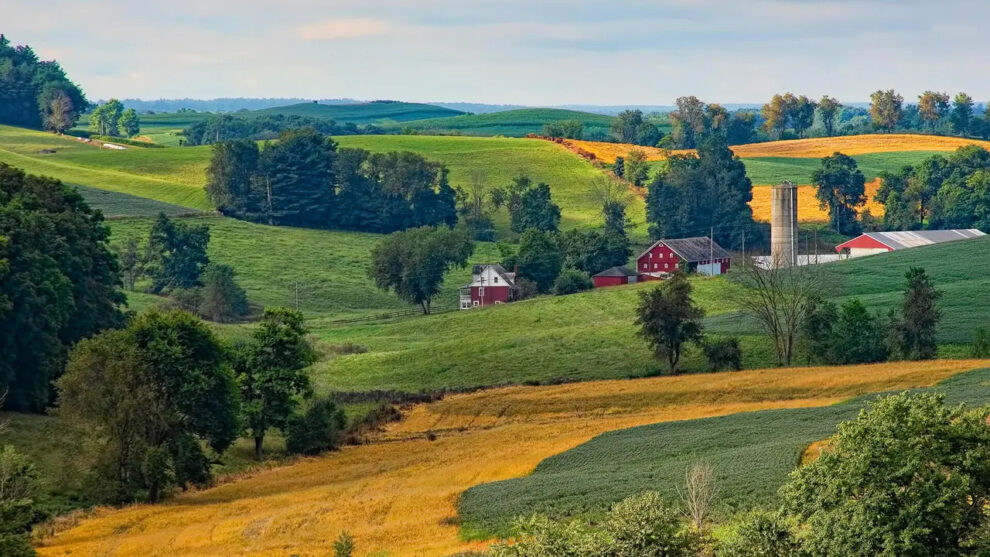While the ongoing saga of Trump and his court dates dominate news from the United States, something very interesting is happening in Washington.
The Rebuild Rural America bill is being considered in the Senate that, if passed into law, would usher in a revolution in the way the US funds rural communities.
Like most things in US politics, the new proposal comes with a big price tag — $US50 billion ($77.7 billion) over five years.
What is interesting for Australia is not just the scale of the proposed investment but how it is proposed to be spent.

Targeting three factors
Before getting into the details of what is proposed for rural America, it is important to first highlight three similarities to the issues we face here in Australia.
These factors define the need for the new approach proposed in Rebuild Rural America and are the reason Australia should be considering similar changes.
Firstly, poorer social and economic conditions, lower incomes, ageing communities, and higher poverty rates are common to rural areas in both nations.
So is the challenge of supporting future prosperity in areas where the population is sparse, more isolated, and where traditional agricultural, manufacturing, or mining industries no longer provide the same jobs and job security.
While Australia’s social safety nets, minimum wages, and other systems place our rural areas in a better position, the outcomes we are seeking from rural policies are fundamentally the same.

Secondly, it is also striking how much the purpose of the Act aligns with current hot-topic issues in rural Australia.
Workforce shortages, climate change and resilience, economic competitiveness, infrastructure improvements, and success in the digital economy are all highlighted — illustrating that rural Australia is grappling with challenges that are global as well as local.

Finally, and most importantly, are the reasons why it is argued that the US government needs to change the way it invests in rural areas.
Rebuild Rural America is fundamentally a response to the recognition that the US government is spending plenty of money on lots of different programs and initiatives for rural areas, but by investing in many small grants and programs it’s hard to monitor whether it is having any lasting impact.
Worse, the need to make so many submissions and to compete to secure local investment also saps the resources of small rural communities.
It provides no long-term certainty for planning or ways to invest in initiatives that will take 5–10 years to bear fruit.
The problem in the US is neatly captured in a recent report by the Brookings Institute that found that the funding for rural America was “outdated, fragmented, and incoherent”.
This review identified more than 400 programs across 73 US government agencies and 14 legislative committees.
The diagram developed by the authors attempting to show the connections between these programs was so complicated it had to be simplified to fit on the Brookings webpage.
While there is no comparable study available in Australia, it is the same situation here.
We too have many individual grant programs from different agencies all with their own objectives, reports, timing, processes, and peculiarities.

Flexibility in block grant funding
What the Rebuilding Rural America Act proposes to do is attack this problem head-on by completely changing the way in which funds are invested in rural areas and who makes the decisions about what money is used for at the local level.
According to the proponents of the bill in Congress, the aim of Rebuild Rural America is to provide a “straightforward, renewable, flexible source of block grant funding”.
This means that instead of all the grant programs run by government departments, money would be provided directly to rural communities in a single pool to be spent according to agreed local plans and decisions targeting key issues, and what might work best in each area.

Giving locals genuine influence and accountability for investment would be a revolution for rural Australia.
For their increasingly broke local governments and community groups relying on volunteer effort it would mean the chance to spend much more effort and money on solving local problems.
According to common data sets from the World Bank, Australia and the US have similar proportions of their population in rural areas — around 14 per cent and 17 per cent respectively.
With 46 million US residents living in rural areas in 2020, and perhaps 3.5 million in Australia, a similar spend to the investment proposed in the US Act would translate to $5.9 billion for rural Australia over five years.

On face value, it is a big number. But if you add up the myriad small investments made in rural issues by state and federal governments, it may be closer to what is already spent.
Even a portion of this investment delivered via a similar approach would begin to break the grants cycle and put us on a pathway to genuine change for rural Australia.









